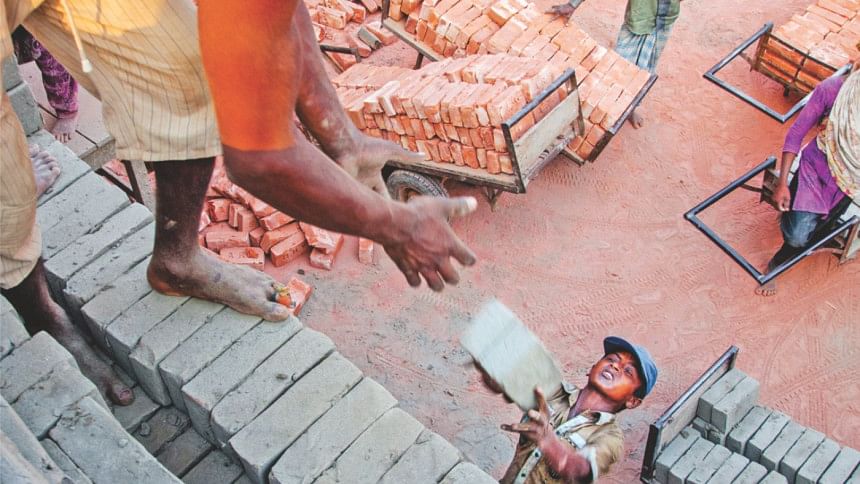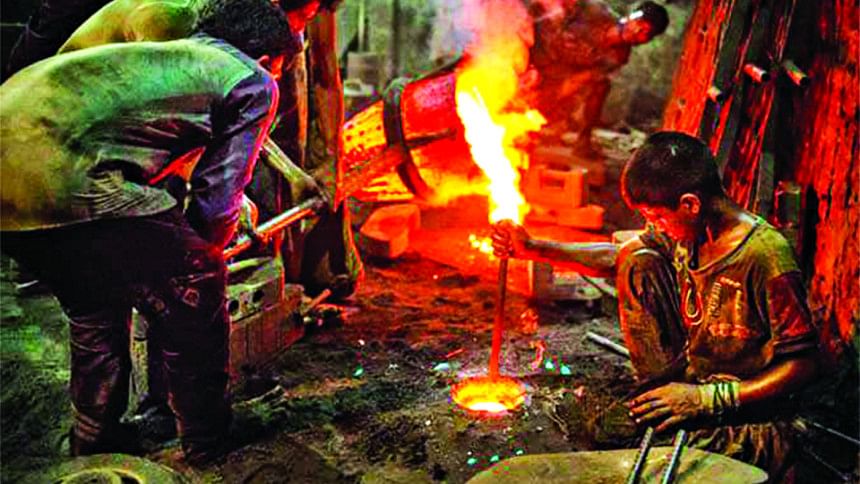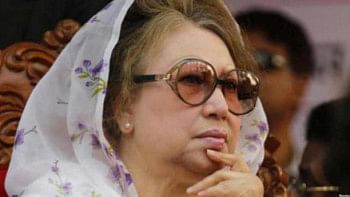We Can't Turn a Blind Eye

Photos: Ponir Hossain
Abdul Kader, a nine-year-old boy was cleaning the fuel chamber of a private car. Lying beneath the car's axle when Abdul opened the plug of the chamber, a sudden splash of octane poured on his face. He managed to seal the chamber with another plug quickly and saved the rest of the fuel. However, that did not save him from the harsh treatment of his manager. For the slightest mistake, the manager would often stop Abdul's meal and sometimes beat him mercilessly while 'showering' him with abusive words.
Abdul does not get any salary from his manager. He has been working as a novice motor mechanic for a year. For round the clock duty in the workshop, he gets only three square meals a day and a space in the workshop. His parents decided to stop his school when he was in class two and admitted him to the workshop in Dholaikhal to support his family.
In Dhaka's Dholaikhal and Banglamotor area, there are thousands of children like Abdul who have been forced to leave school to earn a livelihood by backbreaking jobs at the motor workshops. Besides these, children are employed in every industrial sector such as in the brickfield, welding workshops, garbage collection, construction works and so on for cheap labour. According to The National Child Labour Survey 2013 which was published in October 2015, 3.45 million children aged between 5 to 17 years have been working in Bangladesh and 1.8 million of them are involved in hazardous jobs.
However, a survey conducted by UNICEF in 2010 revealed that the number of working children aged between 5-17 years of age is 7.4 million in Bangladesh. According to a responsible official involved in the national survey who requested not to disclose his name, "I don't know about the survey conducted by UNICEF. However, our previous survey was conducted in 2003 which found the number of working children almost double the current number."
The source revealed a major discrepancy of the national survey that made it a questionable source concerning the number of working children in Bangladesh. The source said, "It was a household survey. Our survey scope was limited to working children living with their families at home. We did not include street children or the children who live in the workstations or outside their homes in the survey sample."
"Now, we are planning to launch another survey on the street children and the working children who live outside their homes," he adds. This survey with such major inconsistency is still being considered as the basic source of information for any initiatives regarding the prevention and elimination of child labour in Bangladesh.
"For any kind of policy level or intervention programme regarding child labour, we have to depend on this government survey. However, we are also not satisfied with the information and methodology of the recent survey" says Halima Akhter, program officer (advocacy and networking) of Bangladesh Shishu Adhikar Forum, one of Bangladesh's leading non government organisations working for children's rights. "We have contacted the national survey authority but did not get any specific response," she adds.

A lot of initiatives by non government organisations are being operated in Bangladesh to include dropped out and working children into mainstream education and to rehabilitate those who are already involved in hazardous jobs. However, these are very difficult tasks. No reliable study in this regard means that the organisations who have been working to eliminate child labour in Bangladesh have to work without any specific data and operational information. As a result, many of such initiatives have been proved unsustainable and the numbers of children like Abdul are increasing day by day.
Bangladesh government has adopted a national policy to eliminate child labour in 2010. According to the policy, Bangladesh has envisioned to eliminate child labour from the country by 2025. Contrary to the vision, millions of children like Abdul are decaying their lives in lethal chemical industries, motor workshops or welding factories. And, the most unfortunate fact is, most of these children are not even recognised as working children by the national survey due to its weird methodology. To reach Bangladesh's great goal of eliminating child labour by 2025, there is no alternative to conduct another survey from where researchers and development workers can get a true, comprehensive picture of the child labour condition in Bangladesh.

 For all latest news, follow The Daily Star's Google News channel.
For all latest news, follow The Daily Star's Google News channel. 



Comments